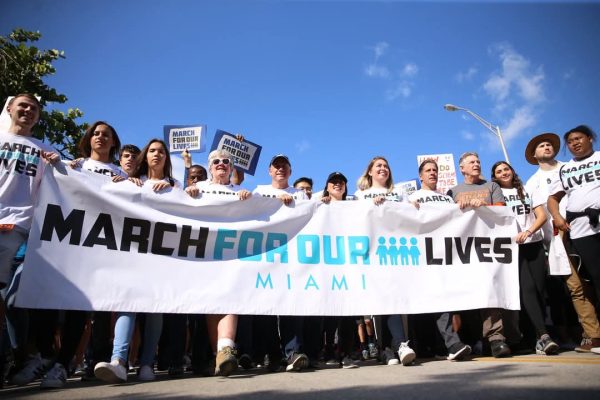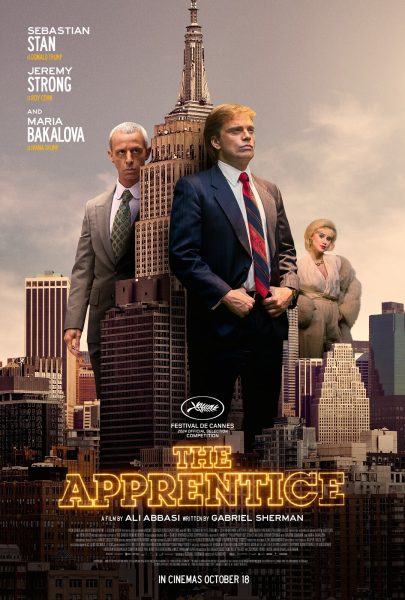Mayor Suarez’s MiamiCoin push won’t create a crypto utopia
(But it will create tech jobs)
When he spoke to the Ransom Everglades community on December 7, City of Miami Mayor Francis Suarez voiced his view that “in order to have a city that all of you can prosper in, we had to make sure that we built our tech ecosystem, our tech economy.”
In building this “tech ecosystem,” Mayor Suarez intends to mold Miami into a cryptocurrency hub as well. Cryptocurrency is an emerging financial technology, and adopting it as wholeheartedly as Mayor Suarez has could lead to both major rewards and disastrous consequences.
The Mayor’s methods of promoting and making Miami a poster city for the new technology have been varied. He has taken the symbolic step of taking a paycheck in Bitcoin. This performative act has now been copied by others, including the new of New York, Eric Adams.
Mayor Suarez has also planned more substantial actions as well. He has explored paying city employees in Bitcoin and pitched using Turkey Point Nuclear Generating Station to power large scale Bitcoin mining.
Mayor Suarez’s only major cryptocurrency plan to have come into effect so far is also likely his boldest: introducing Miami’s own crypto currency, MiamiCoin, which is being used to raise revenue for the city.
MiamiCoin was not created by the city itself, but in cooperation with the non-profit CityCoin. Users who hope to gain MiamiCoins use computer software to run complex equations to create, or “mine,” a cryptocurrency known as Stacks, which can itself be converted into MiamiCoin through CityCoin.
The City of Miami takes thirty percent of the value of new MiamiCoins, while the coin’s “miners” take the rest. In exchange, the city hopes that by giving the new coin its name it will gain popularity and therefore value.
Additionally, the coin also gains interest from crypto enthusiasts due to the possibility that in the future, salaries for City of Miami employees, as well as goods and services produced in Miami, could potentially be paid for in MiamiCoin.
Dr. Giacomo Di Pasquale, who teaches economics and comparative government at Ransom Everglades, explained that when it comes to cryptocurrencies, “It’s all a matter of trust and perception, so the currency is stronger as long as people believe in it and as long as people have it.” This is because the more people believe in a cryptocurrency, the more it circulates, and the more it circulates, the higher its value will be. It is because of this effect that the city has given its name and confidence to MiamiCoin.
The City of Miami has already taken in over $21 million from its thirty percent cut from MiamiCoin over the past three months since it launched, and Mayor Suarez estimates that it will raise over $60 million in this fiscal year for the City of Miami.
Mayor Suarez has even spoken of the possibility of one day allowing the income from MiamiCoin, which the city currently treats as donations, to replace taxes in the city.
While the prospect of making the City of Miami tax free with the power of MiamiCoin may seem enticing at first, it could have serious drawbacks because cryptocurrencies are inherently volatile.
“Money that we use right now is controlled and moderated by central banks,” explained Dr. DiPasquale, but cryptocurrencies are a decentralized currency that are not backed by any central institution. “Commodities and fiat currency have a value that is established. With cryptocurrency, the value is the consequence of a mechanism of trust, so it is a bit too fragile.”
If the City of Miami were truly dependent on MiamiCoin for its income and trust in the currency were lost, the result could be a disaster. The city’s income could potentially bottom out.
To make matters worse, this near total loss of revenue would almost certainly occur right when the city needed money the most, during an economic crisis, because that is also when investors into the city’s crypto would be most likely to lose confidence in it. A city reliant on cryptocurrency that has lost its source of income would need to transition back to traditional taxation, which in a time of crisis would only deepen a recession.
It is still exceedingly unlikely that the value of MiamiCoin will ever rise enough to become the city’s main source of revenue. In fact, the value of MiamiCoin is already going down, and in only the past three months, it has lost almost eighty percent of its value, according to data from the cryptocurrency website coinmarketcap.com.
MiamiCoin debuted at six tenths of a cent, but on the second day of trading shot up almost tenfold to exactly five cents. In the following three weeks, the value of the coin plummeted to a low of $0.01102, and nearly quintupled to a high of $0.0516 before beginning to fall back down. As of the writing of this article, a MiamiCoin is valued at $0.01107, about one cent, just one fifth of its value only a few months ago.
MiamiCoin’s volatility is evidence that it was never a real alternative to traditional money. The new cryptocurrency lost over 5% of its value on December 10 alone. For comparison, the value of the US dollar went down by a little over 6% in the entirety of 2021, in the worst year for inflation since 1982. Typically, the annual inflation rate for the dollar is closer to 2%.
Such volatility is not unique to MiamiCoin; it is a function of deregulated nature of cryptocurrencies, as explained by Dr. DiPasquale. After all, Bitcoin once lost thirty percent of its value in one day.
This rapid loss in value for MiamiCoin could be because the novelty of the coin’s announcement has worn off. If the coin’s original value was due mainly to novelty, its heyday may already be behind it.
Although MiamiCoin looks like it will fall far short of the lofty goal of funding the city on its own, it could still prove to be a useful experiment. The coin will likely continue to raise small amounts of revenue for the city. While cryptocurrency will not replace tax income, it can supplement it.
More importantly though, funding the city on its own was likely never the true goal for MiamiCoin. Instead, it has been a useful tool for raising Miami’s brand value as an emerging tech hub. In this respect, MiamiCoin has been a smashing success.
A flurry of blog posts and news articles followed the Mayor’s announcement of the coin, ranging from stories in established organizations such as the Washington Post and Financial Times to more crypto-exclusive outlets such as Coindesk. This increased attention was likely what Mayor Suarez had been aiming for all along, to continue Miami’s transformation into a technology hub.
In the months since the announcement of MiamiCoin, Google searches for Miami tech more than doubled, even as the value of the cryptocurrency fell. Online interest in the Miami tech sector even surpassed that caused by the now famous “How can I help?” tweet that the Mayor sent out in 2020.
This online hype for Miami’s tech sector will likely translate into real world growth. In the past year since the “How can I help?” tweet, the Miami area has seen a 15% increase in the number of tech-related jobs, the most out of any major city in the country. When speaking to RE, Mayor Suarez expressed his belief that “the jobs of the future are tech based,” and he is succeeding in creating those types of jobs.
MiamiCoin may have a similar effect in terms of spurring growth for our local tech sector— while raising the city some money in the process. Even if the possibility of Miami becoming overly reliant on MiamiCoin would be harrowing, this will never be close to occurring, because MiamiCoin is never going to grow enough to become a true alternative to taxes. What has occurred instead, however, is almost certainly a victory for Miami’s tech sector—and its mayor.

Javier Kumar '22 is a staff writer for The Catalyst. He specializes in features.





